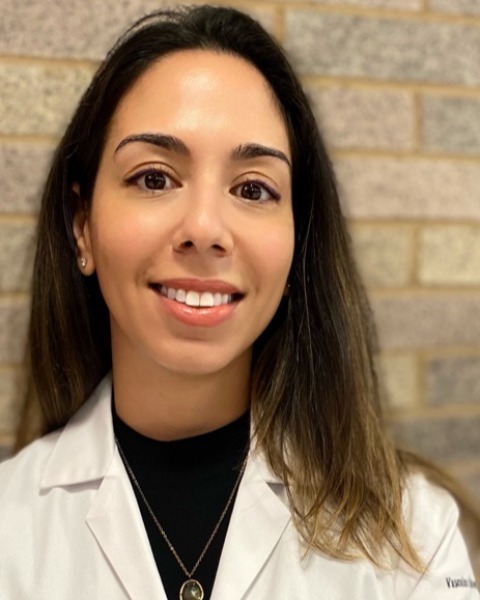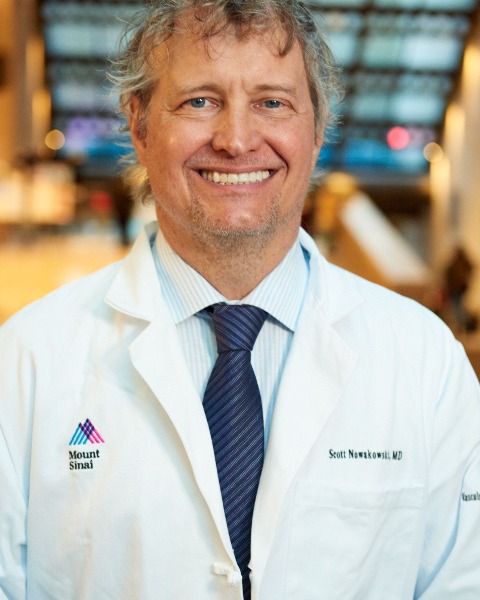General IR
Improvement in Right Ventricular Dysfunction by Echocardiography After Percutaneous Large-Bore Thromboaspiration for Patients with High- and Intermediate-High Risk Acute Pulmonary Embolism

Haley Zarrin, BA
Medical Student
Icahn School of Medicine at Mount SinaiDisclosure(s): No financial relationships to disclose
- JW
Jennifer M. Watchmaker, MD, PhD
Resident Physician
Mount Sinai Hospital 
Vivian Bishay, MD
Associate Professor
Icahn School of Medicine at Mount Sinai Hospital- RP
Rajesh I. Patel, MD
Assistant Professor of Radiology and Surgery
Icahn School of Medicine at Mount Sinai 
Scott Nowakowski, MD
Professor of Radiology and Surgery / Vice-Chair
Mount Sinai Health System.jpg)
Dan Shilo, MD
Assistant Professor
Mount Sinai- KG
Kirema Garcia-Reyes, MD
Assistant Professor
Mount Sinai 
Rahul S. Patel, MD, FSIR
Professor of Radiology and Surgery
Mount Sinai Medical Center- AF
Aaron M. Fischman, MD
Professor of Radiology and Surgery
Mount Sinai Health System - RL
Robert A. Lookstein, MD
Professor of Radiology and Surgery
Icahn School of Medicine at Mount Sinai
Presenting Author(s)
Author/Co-author(s)
Right ventricular dysfunction (RVD) predicts outcomes in patients with acute pulmonary embolism (PE). Therefore, our goal was to evaluate changes in RVD before and after large bore thromboaspiration using the FlowTriever System (Inari Medical, Irvine, California) in patients presenting with high risk (HR) and high-intermediate risk (HIR) acute PE.
Materials and Methods:
Patients treated between January 2019 and July 2022 were retrospectively reviewed. Pre- and post-procedural pulmonary artery systolic pressure (PASP; from catheter measurements), RV systolic pressure (RVSP; from echo), RV dilation, length of stay (LOS), and 30-day mortality were recorded.
Results:
74 patients underwent intervention, 18 (24.3%) of which had HR and 56 (75.7%) HIR PE. 37 patients (17 female; median age 60, range 27-86) had formal pre- and post-thromboaspiration echos within 90 days. Median days to post-procedure echo was 2.0 (range 1-89d, IQR [2.0-4.0]). 34 patients (87.2%) had RV dilation on pre-procedural echo and 20 (51.3%) following intervention (p < 0.01). 20 patients (54.1%) had severely decreased RV function pre-procedurally, compared to 4 (10.8%) after (p < 0.01). 19 patients (48.7%) had elevated RVSP pre-, which decreased to 8 (23.5%) post-procedurally (p < 0.01). PASP decreased an average of 16.2mmHg (45.9 pre-, 29.7 post-procedurally, p< 0.01). Fewer patients had hypokinesis (18 (48.7%) pre-; 6 (16.2%) post-procedurally, p< 0.01) and McConnell’s sign (11 (29.7%) pre-; 1 (2.7%) post-procedurally, p< 0.01) after thromboaspiration. Median LOS was 9.0d (IQR [4.0-28.0]) and 30d survival rate was 97.3% (1 patient with HIR PE died).
Conclusion:
Treatment of HR and HIR PE with large bore thromboaspiration results in improved RV function. Ongoing multidisciplinary research will help define long term cardiac outcomes.

.png)
.png)
.jpg)
.png)
.png)
.png)
.png)
.jpg)
.jpg)